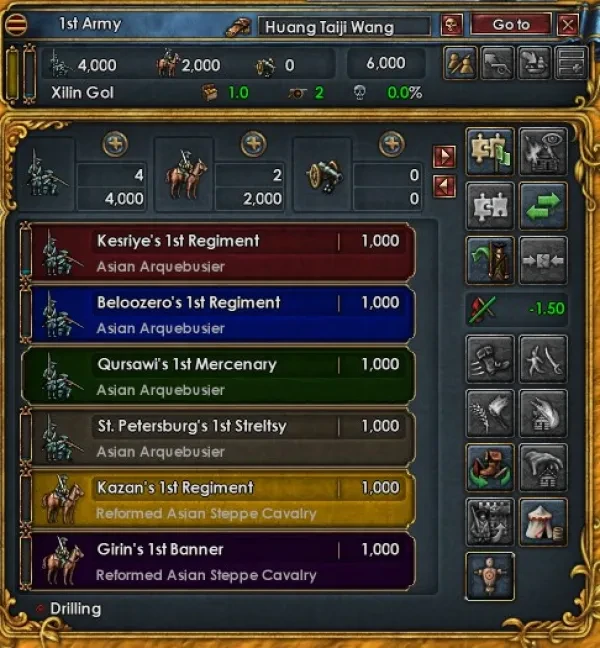
Throughout the course of a campaign the only thing that will enable you to protect, and expand, your domain will be the various legions, hordes, and cohorts your nation will be able to raise. That being said, not all troops throughout history were levies or conscripts. And, just like in real life, EU4 has plenty of specialized kinds of troops available to a wide variety of nations for you to choose from.
So many in fact, that a great many strategies can be developed depending on which you choose to use.
1) Marines
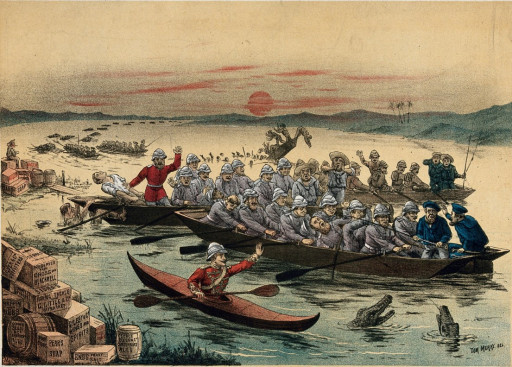
I’ll be honest with you, marines aren’t really that good. Now, to be fair, they aren’t exactly useless, but their utility is very much bound to their niche. The problem comes from the niche itself.
Rather, marines, like the name suggests, are very much bound to the ocean and naval gameplay. This, as you might realize, is a bit of a problem considering how much focus there is on land-based gameplay in EU4.
Their main selling point is that they can embark onto ( which in practice is all but useless ) and disembark off of transport ships 50% faster ( which is only extremely situationally useful ). Now, why is it useless and situationally useful you may ask? Well, there is flat out no reason why you would ever want to willingly embark your troops on a transport fleet considering that you could do the exact same, except almost instantly if you tell your ships to go to port and only then move your army onto it.
Really, the only possible use you’d have for this would be if your army breaks and can only retreat to transports, but even then, the usefulness is limited. Now, as to why disembarking is not very useful, is simple, you’d only really use it once when declaring war. Normally, it takes 36 days for armies to disembark transports, giving your opponent enough time to get a morale tick, so marines could theoretically be able to do a stack wipe in the very opening stages of a war.
…Except the enemy has to either be drilling their troops, not pay them because they can’t afford them or, y’know, actually place their army on their coast instead of any inland province. All of these requirements make the surprise sneak attack utility of the marines kind of… low. And that’s not even taking into account the fact that all your enemy has to do is move their army one province away from the coast to invalidate the tactic completely!
Oh, but no, the marine's woes don’t stop there. Even if they get into combat, they’ll end up taking 10% more shock damage, which in the early game, is the main type of damage!
But, credit where credit is due, it’s not all doom and gloom. They do also use sailors instead of manpower, so if you want to conserve your manpower for actually good armies, then marines are perfectly capable cannon fodder. As well, they don’t take any attrition at sea, which all other regiments do, and even lose the penalties to rolls from crossings and landings.
That being said, even when being looked at in the most positive light… they just fall short of all expectations. And, of course, the fact that it’s surprisingly hard to increase their number doesn’t help them one bit.
Pros:
- No attrition at sea (only counts for regiments, not transports)
- Use sailors instead of manpower
- Very quick embark and disembark speed
- No penalties from crossing and landing
Cons:
- Take 10% shock damage
- Few sources to increase their number
- Their greatest strengths are almost worthless in practice
2) Mercenaries

Before an in-depth exploration of mercenaries takes place, I would like to ask you a question. Did you know that throughout all of human history, most armies actually consisted primarily of mercenaries? In fact, professional, standing, armies only really started to get going after the end of the Hundred Years’ war.
Funny then, how basically all nations in EU4 not only have a developed concept of a standing army but are also represented as the only way armies functioned. So what does this have to do with mercenaries? Well, simply put, the way mercenaries act in EU4 is far more historically accurate for the time period the game takes place in than normal troops.
Rather, since Emperor, mercenaries are raised as entire armies, instead of regiments, which means that all of their regiments come out of the same province, already grouped together. This is a good thing. Because that pretty much means that you can raise an army anywhere in the world that you control, be it an owned province or an occupied one in a far-flung part of the world.
Furthermore, many areas of the world have special mercenary companies that have various effects, both positive and negative, that alter the strength of the sudden-army-on-demand that you’ve recruited. In fact, they also come with their own generals which get replaced for free whenever the old guard finally bites the bullet. And of course, let’s not forget the splendid fact that mercenaries also have their own manpower pool, meaning that you can safely send them into the grinder again and again without fear of flushing your manpower down the drain in pointless skirmishes.
So, if mercenaries seem this good, what’s the catch then? Well, quite a lot actually.
First and foremost, their cost. They are, and I do mean this when I say it, utterly overpriced for what they do. Rather, as you grow larger and more powerful, so too will the mercenaries, except your growth and their increase in numbers will be linear, while their cost increases exponentially.
Beyond that, their composition is terrible. Often, you’ll come across armies that either exceed combat width or are far below it, not to mention, that there is often too much cavalry for non-horde nations to use to any effect, and any artillery located in those armies is also woefully inadequate to accomplish anything more than almost nothing.
And that’s not even the worst of it. Because anyone who buys them also loses 5% army professionalism, which is far harder to regain. And besides, if you’re already willing to lose that 5%, slackening recruitment is arguably a better option for you to choose. As well, mercenaries also can’t be drilled like normal troops, and, notably, you still have to pay them even when you stop paying the rest of your army, which, admittedly, means you also always have an army ready for combat
And finally, the most damning nail in the coffin. They are just clunky and difficult to manage en masse. Rather, you can’t split them, the only way to combine them is by a somewhat lengthy and fairly unreliable workaround, and heavens forbid you lack even one transport to move your mercenary army because now you’ve just wasted money due to their sense of camaraderie which doesn’t allow them to leave anyone behind.
Overall, they can definitely be fun to play with and offer plenty of strategic options, but ultimately, are far too unwieldy to use for very long.
Pros:
- Instant army on demand, even in enemy territory
- You can have loads of them
Cons:
- Costs professionalism
- Cost gets grossly overblown throughout the course of the game
- Poor composition
- Annoying to manage
- Can’t split
3) Cossacks
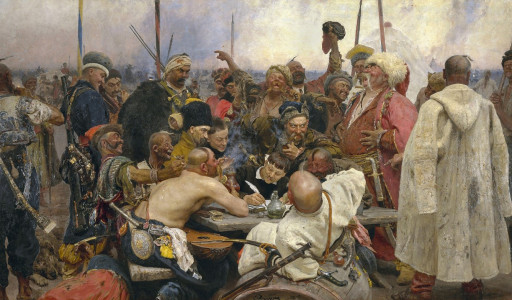
This, I would like to announce is the first regiment type that can be considered a proper special unit. Unfortunately for them, they aren’t really very good.
Now, the real-life Cossacks were quite the mad lads throughout their entire history. Combining the best of the best from Mongol and Slavic cultures, these stoic horsemen were a formidable foe to any who tried conquering their steppe homes.
Sadly, in-game, their usefulness is rather limited. For starters, in order for you to even be eligible to field them, you need to be an Orthodox nation that has conquered some steppe provinces. Then, you need to get a specific privilege to the Estate that shows up, and only then, can you recruit Cossacks.
Unfortunately, this also means that their unit count is bound to the amount of land share the Cossack Estate has, which is a problem for any future centralization efforts. But, surely they must give good bonuses, right? Well, not really.
The Cossacks do an extra 10% shock damage. Now, while any and all extra damage is nice, shock is arguably the weaker type, and only really useful for cavalry. That being said, they also have a negative, which they share with the Streltsy, where they increase the cost of raising stability by 1% for every 1% of force limit of Cossacks.
Thankfully though, the already low count of the units means that you won’t be very hampered by their malus.
So, overall, they’re not very good, are they? Well, no, but they aren’t bad and they arguably don’t really have any real negatives in practice. That being said, their bonus shock damage can be used in a rather silly way.
Rather, Cossacks are arguably the best unit to use in order to make the strongest cavalry in the game, and the best nation to do that? Poland. Now, I won’t go into any details about how you should go about that, because it’s actually as silly as it is roundabout, but sufficed to say, utilizing this strategy you could effectively roll over any and all opposition with utterly insane horsemen of the apocalypse.
Regardless, Cossacks are a useful unit to throw into any army if you have the unit capacity, but more often than not, you’ll probably forget they even exist.
Pros:
- Allow for a silly strategy
Cons:
- Require an Estate and privilege
- Increase stability cost
- Bonus not very useful to nations who can use them
4) Standard
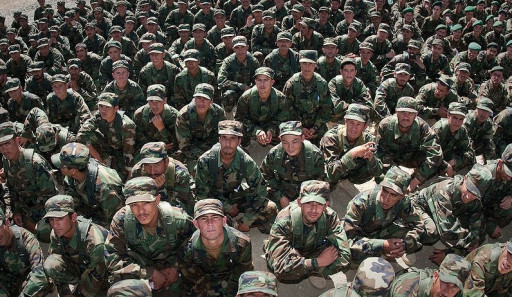
While it may surprise some of you to see regular regiments so high up on the list, the truth of the matter is that, regardless of how good or how many special regiments you have, it’s the regular grunts that will be doing most of the work.
Yes, indeed. Whereas other regiments have various bonuses or maluses. Whereas other regiments might have a special cost to them or a unit cap of some kind.
Regular troops have no such luxury. A simple cost of 1 000 manpower and 10, 25, or 30 ducats for one regiment of infantry, cavalry, or artillery, respectfully. Nothing more, and nothing less.
And yet, there is nary a campaign played where these unspoken heroes of EU4 aren’t utilized!
While I could go on about and mince words, the fact of the matter is that this is the unit type that you’ll be using most throughout all of your campaigns. After all, any bonuses the special regiments have, use the regular units as a starting point and then they scale from there. As such, simply because of the inevitability of this type of unit making up the bulk of your forces, not to mention not having any maluses, the regulars firmly deserve this place.
They aren’t near-pointless as marines are. Nor inconvenient to use and manage as mercenaries. And unlike the Cossacks, you can actually recruit an unlimited number of regular troops, provided you can afford them that is.
As a result, they deserve their place here, not because of their greatness, but because of their ubiquity.
Pros:
- Nothing
Cons:
- Literally nothing
5) Cawa

Cawa’s are the latest regiment type to have been added to the game, and they are a very solid unit all things considered.
While their cost is… not the easiest one to pay, you certainly get more than enough bang for your buck, so long as the regiments aren’t wiped out that is. And what is the grievous cost that they, well, cost? Military monarch points.
Rather, they are one of only two regiments to cost a type of monarch points, the other being Janissaries. And while their cost of 5 Mil points per regiment is cheaper than the Janissaries 10, you’re still looking into a pretty big investment for a single unit. Not to mention the fact that they’re also more expensive to reinforce, as well as being slower to reinforce than regular troops.
But, let’s take a moment to look at the bright side because the bright side does actually give a pretty good deal. Cawa’s suffer from less attrition, which in the Sub-Saharan region of Africa is a godsend. Beyond that, they also take 15% less shock damage, which is massive in the early game and, because of how damage works, also a solid bonus in the mid and late game.
There is, however, a slight problem with them that I would like to address. Rather, remember how I mentioned Sub-Saharan Africa? Well, the only nations that can actually field Cawa’s are those that have the Negusa Nagast Monarchy or Solomonic Empire government reform… which in practice is only Ethiopia.
Then again, even if you’ll only have access to them as Ethiopia, you’ll still manage to get a decent number of them, perhaps not as much as some other special regiment types, but certainly enough to have a few heavy-duty brawler armies out and about.
Pros:
- Solid quality
- You can have a lot of them
Cons:
- More expensive than regulars
- Cost Military Monarch points to recruit
- Only available to certain government types
6) Streltsy
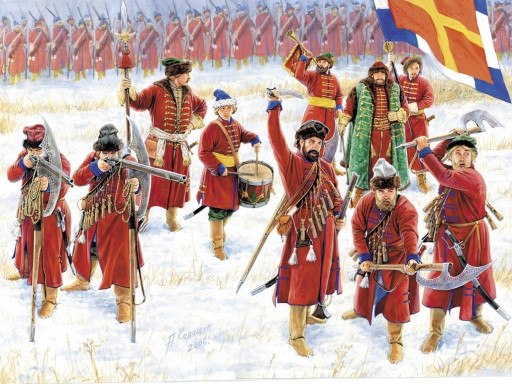
Did you know that Streltsy are more or less the Russian version of the French Musketeers? Well, even if you didn’t before, now you know!
Jokes aside, the Streltsy are a special regiment type available to any East-Slavic-culture nations with the following three reforms: Veche Republic, Russian Principality, and Tsardom. While this might seem like a pretty big restriction, it’s actually not really, since all of the Russian nations are either Veche Republics or Russian Principalities, as well as the many releasable nations from Lithuania and Poland. And of course, Tsardom is only available to either Russia itself or Ruthenia.
Now, there are actually two versions of Streltsy. The first of which comes from the government action itself, previously the only way of getting Streltsy. And the other is the unit macro builder from which you can build as many Streltsy as you want, however, these ones cost money.
Like I had mentioned previously, Streltsy have the same malus as Cossacks, increasing your stability cost the more you have them, however, unlike the Cossacks, this affects the Streltsy differently. Rather, the fact of the matter is, you’ll be absolutely drowning in Streltsy, arguably the most numerous out of any special unit. This means that unlike with the Cossacks, you’ll actually have to be wary of your count of them if you’re planning on buying stability, something that, admittedly, you’re probably not going to be doing past stab 1.
That being said, their comparison to Cossacks doesn’t end there. In fact, instead of shock, they increase your unit's fire damage by 10%. But here’s the kicker, not only do they boost the better damage type, but they boost it for the more efficient regiment type, that being infantry.
Other than that, there’s… not really that much to say about the Streltsy. They are, for the most part, just slightly better infantry that you’ll pretty much always use. In fact, there’s even a bit of a loophole you can do with them.
Rather, once you gain enough Army Professionalism, instead of slackening recruitment to get a bunch of manpower, you can actually recruit the free Streltsy from the government action, and then disband them. Effectively giving you 20% of your land force limit in manpower for literally nothing every decade or so.
Pros:
- Could be gained for completely free
- Able to raise multiple armies worth of troops at a time
- Solid quality
Cons:
- Action to raise them could take a long time to fill
- Increases stability cost
7) Janissaries
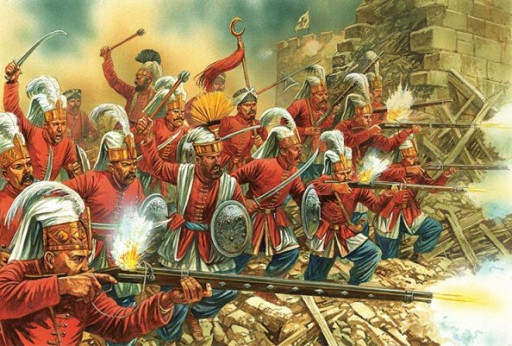
Janissary regiments are a sort of one-two punch available to the Ottomans. Not only are the Ottomans objectively the strongest nation in the start of the game, but they also have a special unit designed specifically to ruin their enemies day!
Jokes aside, Janissaries are actually a very good unit, though not without its flaws. For starters, their number is directly related to how much heathen land you own. What this means is that if you want to recruit more of them, you’ll have to follow the historical Ottoman expansion route and start conquering land in Europe.
Additionally, 10 Mil per regiment. That cost is just too damn high! However, reason stands that if something is that expensive, it should be pretty good right?
Well, like to the Cawa, Janissaries take less damage during combar, and also drill faster which also directly reduces casualties taken. Unlike the Cawa, however, instead of having a -15% shock damage taken reduction, they have a -10% shock and fire damage reduction. This essentially means that they scale extremely well the longer the game goes on, considering that because of how combat works, it is better to take less damage than it is to deal more.
That being said, they also are also twice as expensive to reinforce, money wise. But considering that you’ll be playing as the Ottomans, or potentially Rum if you form it since they also have access to the Ottoman government which is what allows their recruitment, money likely won’t ever be an issue. However, there is one more thing that puts Janissaries, an otherwise very good regiment available in decent numbers, so far away from the top.
Rather, there is a disaster that can happen once the Age of Discovery passes. The disaster is called the Janissary Coup and triggers if you have more than 20% Janissaries in your army. Overall, it’s a pretty bad disaster, though the same could be said for every disaster, and makes using Janissarries a bit more tactical.
Would you recruit more higher quality troops at the increased risk of having a civil war, or no? The answer to that question will certainly vary.
Pros:
- Good quality
- Don’t cost manpower to recruit
Cons:
- Limited to only one government type
- Might cause a disaster if mismanaged
- Need good amounts of Heathen land
- Costs Military Monarch points to recruit
8) Rajputs
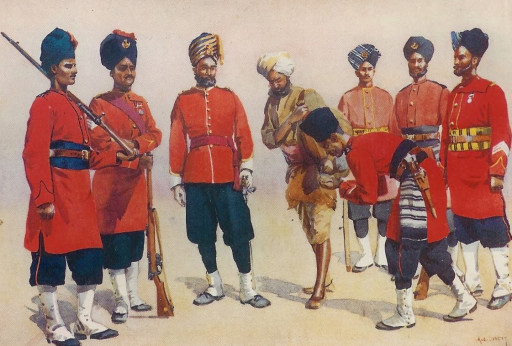
Without a shadow of a doubt, Rajputs used to be the single best special regiment type in the game. So, why aren’t they at the top now then?
The answer to that is simple. You will barely be able to field any of them.
Rather, they have the “Cossack” problem, that being the fact that they are only available to countries who have a specific Estate, and then give a specific privilege to said Estate. The Estate in question is the Rajput Estate and it is only available to Indian nations that aren’t in the Dravidian culture group. Besides completely excluding the South Indian cultures, the Rajput Estate itself is fairly subpar, having both the regular noble and the unique Marathas Estates outperforming it for passive bonuses and the Marathas having a privilege giving discipline to your entire army instead of just a fraction of it!
Previously, before Emperor, the Rajput Estate used to give you 10 regiments every once in a while, making them the absolute best regiments in the game. But, ever since the introduction of crownland and crownland ownership-based regiment caps, the number of Rajput regiments you could field has been cut down dramatically unless you’re playing multiplayer, where min-maxing is king, in which case only a bit of your armies will consist of Rajputs. That being said, they still do pack quite a bit of quality to back up their lack of quantity.
First off, it should be noted that Rajputs themselves give absolutely no maluses themselves, disregarding the Estate, though they aren’t really that good at first. Namely, they only reinforce cheaper, lose drill slower, and have 5% extra morale only for the small, small price of costing 5 extra ducats to recruit. But the real meat and potatoes of the regiment actually comes from yet another Estate privilege. Getting the “Enlist Purbias” privilege will grant your troops an extra 10% fire damage, but that’s not all.
Oh no, in fact, if you also happen to have the “Purbias register” government reform, that privilege will also give your troops an extra 5% discipline. Yes, you heard that right, by taking a reform that gives you an extra 5% army morale recovery speed ( which is deceptively good ), you can be well on your way to making Indian Space Marines.
All of that being said though, Rajputs used to definitely be far better prior to Emperor when they functioned more similarly to Streltsy. In fact, had they still functioned like that, they would’ve flat-out been the best regiment in the game. But, as it stands, they are a cool novelty to use, but outside of dedicated try-hard multiplayer lobbies, Rajputs are probably not going to be seeing much use, especially with the Marathas Estate which is better for the vastly more widespread regular troops.
Pros:
- No maluses
- Cheaper to reinforce
- Very good quality
Cons:
- Requires special Estate
- Not very good without an Estate privilege
- Low unit cap
9) Revolutionary Guard
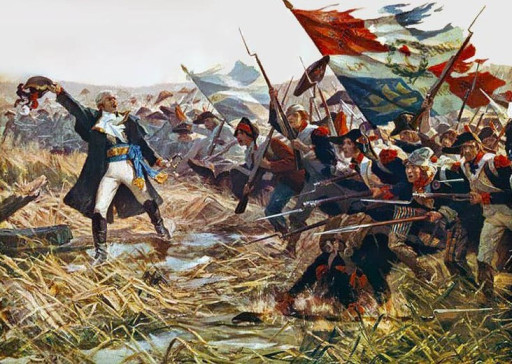
Remember when I said that the Rajputs used to be the best troops? Well, the Rev. Guard is another reason why they’ve lost that title.
At first, they’re actually the closest to Janissaries, namely by taking 10% less fire and shock damage, as well as getting bonuses to drill gain and loss. Furthermore, unlike the Rajputs that came before, the amount of Guards you can build is determined by your force limit and Revolutionary Zeal. Two things that you’re almost certainly going to have in abundance when you get them.
Beyond that, the true reason why they’re so good is that you can buff them! Rather, there are decisions based on your professionalism that you can take that increase the quality of the Guards, usually for higher maintenance. The bonuses include doubling their damage resistance, even more drill loss bonuses, higher quantity, and even an extra 2.5% discipline.
In fact, with so many bonuses the only seeming weakness of the Guards is the fact they cost twice as much as regulars. A weakness that, by the time you get them, isn’t really an issue, given that you’ll most likely have an overflow of money! But, if they’re so great, why aren’t they the best then?
You might’ve noticed that I’ve mentioned “by the time you get them” a few times already by now. The reason for that is, well, in order to be able to recruit the Revolutionary Guard, you have to be revolutionary. Now, that in-and-of-itself isn’t an issue, no the issue is quite literally a matter of time.
The fact of the matter is that most campaigns simply won’t last that long. By the time you’re even eligible for revolution, it would already be the 1700s. On top of needing to not only spawn the Revolution, but also embrace it, alongside the fact that the Revolution spawn isn’t guaranteed to happen immediately, or even that you’ll be the one to spawn it.
So, while the Rev. Guard is incredibly powerful, debatably having no weaknesses, by the time you unlock them you probably won’t even need them. I mean, you’ll have so many bonuses by then, and becoming the Revolutionary Target gives you so many more, that the Guard just end up seeming a bit… lackluster in comparison. Besides, while you can make them from the macro builder, you still can’t make army templates with them, which means you’ll end up having to recruit each and every regiment individually.
Pros:
- Potential for extremely high quality
Cons:
- Very late
10) Banners
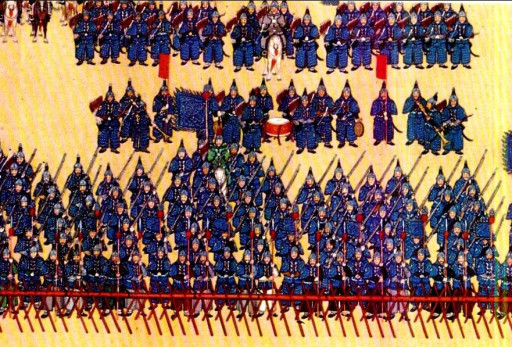
Banners are a very difficult unit to put down, simply because they are very min-maxed.
Rather, they cost no manpower or money to recruit, and only a quarter manpower to reinforce, on top of also straight-up costing 50% less than normal units. But they also reinforce 50% slower, which means that once an army gets knocked out, it’s out of commission for a much longer time. At the same time, they also have an extra 5% disciple, but also give you corruption when recruited
And of course, there is only a specific type of nation that can recruit them. Those nations are any Jurchen or Manchu primary culture nation in the game, with one exception being the Mongol Empire formable country.
Their unit cap is also interesting, giving you a set number of Banners depending on how much development you have in your stated provinces with your primary culture. Unlike the Cawa regiments which don’t care about which culture the provinces have, only that it is stated. However, there is a way around that, aside from just developing your primary culture and, ahem, ‘re-educating’ the various peoples of your empire.
And that method is the exception, the Mongol Empire. The Mongol Empire has the same Banner mechanic, however, instead of recruiting from Jurchen or Manchu provinces, they recruit from the primary culture of whatever nation formed the old Khaganate. To be fair, this doesn’t have much of a use, unless you want to, say, recruit French Mongol Banners, but it is an interesting thing to think about.
Now though, once everything is said and done, why are Banners here instead of the Revolutionary Guards, who are arguably better than all of the other regiments? The answer to this, is simple. They’re fun.
Unlike the Rajputs and Cossacks, you can have a decent amount of Banners. Unlike the Streltsy, they actually have a good amount of quality around them, allowing them to hit quite a bit higher than you’d normally think they would. And finally, unlike the Revolutionary Guards, you have them available from the word go and you only ever get access to more and more of them as the campaign goes on.
The end result is a unit that snowballs extremely quickly, so long as it’s winning and stack wiping. Because, at the end of the day, it doesn’t matter how long it takes you to reinforce your troops, if the enemy doesn’t have any troops left.
Pros:
- Very good quality
- Don’t cost money to recruit
- Extremely cheap to reinforce
Cons:
- Give corruption
- Unit count is heavily dependent on what Age your campaign is in
- Extremely slow reinforce speed
- Culture dependent, unless you form the Mongol Empire
